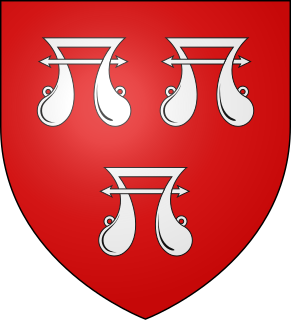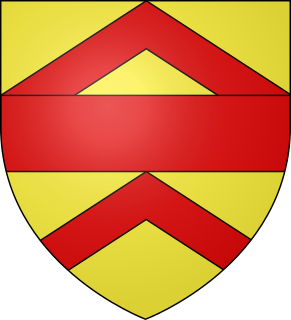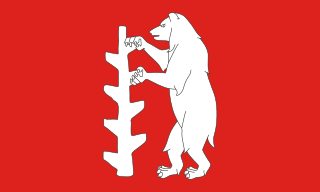
Ralph Neville, 1st Earl of WestmorlandEarl Marshal, was an English nobleman of the House of Neville.

Roger de Mortimer, 4th Earl of March and 6th Earl of Ulster was an English nobleman. He was considered the heir presumptive to King Richard II after the death in 1382 of his mother Philippa of Clarence until his own death in 1398.

Edward Stafford, 2nd Earl of Wiltshire was an English nobleman.

Henry Stafford, 1st Earl of Wiltshire was an English nobleman.

William de Ros or Roos, 1st Baron Ros of Helmsley, was one of the claimants of the crown of Scotland in 1292 during the reign of Edward I.

Eleanor Maltravers, or Mautravers, was an English noblewoman. The granddaughter and eventual heiress of the first Baron Maltravers, she married two barons in succession and passed her grandfather's title to her grandson.
Peter de Montfort of Beaudesert Castle was an English magnate, soldier and diplomat. He is the first person recorded as having presided over Parliament as a parlour or prolocutor, an office now known as Speaker of the House of Commons. He was one of those elected by the barons to represent them during the constitutional crisis with Henry III in 1258. He was later a leading supporter of Simon de Montfort, 6th Earl of Leicester, against the King. Both he and Simon de Montfort were slain at the Battle of Evesham on 4 August 1265.

Reginald West, 6th Baron De La Warr and 3rd Baron West was an English nobleman.

Richard West, 7th Baron De La Warr and 4th Baron West was the son of Reginald West, 6th Baron De La Warr, by his first wife, Margaret Thorley, daughter of Robert Thorley, esquire, of Tybeste, Cornwall, and his first wife, Anne de la Pole, widow of Sir Gerard de Lisle, and daughter of Michael de la Pole, 1st Earl of Suffolk.

Aubrey de Vere, 2nd Earl of Oxford, hereditary Master Chamberlain of England, served in military campaigns under King Richard and King John. He was succeeded in the earldom by his brother, Robert de Vere, 3rd Earl of Oxford.

John Neville, 3rd Baron Neville de Raby, was an English peer and soldier.

John Neville, Baron Neville was an English nobleman and soldier, slain at the Battle of Towton. His son succeeded to the earldom of Westmorland.
Sir Christopher Willoughby, de jure10th Baron Willoughby de Eresby, was heir to his second cousin, Joan Welles, 9th Baroness Willoughby de Eresby, in her own right Lady Willoughby, as well as great-grandson and heir male to William Willoughby, 5th Baron Willoughby de Eresby. Christopher Willoughby was also heir to his elder brother, Robert Willoughby, who died unmarried and underage on 24 March 1467. He was unable to enjoy his inherited title as a result of the attainders of his cousin Joan Welles' father, Richard Welles, 7th Baron Welles, and brother, Robert Welles, 8th Baron Willoughby de Eresby.

John de Vere, 12th Earl of Oxford, was the son of Richard de Vere, 11th Earl of Oxford, and his second wife, Alice Sergeaux (1386–1452). A Lancastrian loyalist during the latter part of his life, he was convicted of high treason and beheaded on Tower Hill on 26 February 1462.

Robert FitzWalter, 1st Baron FitzWalter was an English peer.

John de Lisle, 2nd Baron Lisle of Rougemont, KG was an English peer and soldier who spent much of his career serving in the wars in France. He was a companion of Edward III, and one of the founding members of the Order of the Garter in 1348.

Robert Radcliffe, 10th Baron Fitzwalter, 1st Earl of Sussex, KG, KB, PC, also spelled Radclyffe, Ratcliffe, Ratcliff, etc, was a prominent courtier and soldier during the reigns of Henry VII and Henry VIII who served as Chamberlain of the Exchequer and Lord Great Chamberlain.

Elizabeth de Vere, Countess of Oxford was an English noblewoman. As a young child she became a royal ward. She married John de Vere, 15th Earl of Oxford, and by him was mother of the 16th Earl and grandmother of Sir Francis and Sir Horace Vere, the 'fighting Veres'.

Sir Edward Courtenay was the eldest son of Edward de Courtenay, 11th Earl of Devon. He fought at Agincourt, and was killed in a sea battle in Henry V's continuing campaigns in Normandy.
Sir Richard Hastings, Baron Welles, was the son of Sir Leonard Hastings and a younger brother of William Hastings, 1st Baron Hastings. He was a favourite of Edward IV, who granted him the lands of the baronies of Willoughby and Welles after he had married the heiress, Joan Welles. He fought at Tewkesbury. He died in 1503, and was buried at the Greyfriars, London.



























